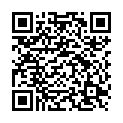|
|
|
| Module code: PIB225 |
|
|
2V+1P (3 hours per week) |
|
3 |
| Semester: 2 |
| Mandatory course: yes |
Language of instruction:
German |
Assessment:
Written examination
[updated 08.05.2008]
|
PIB225 (P200-0006) Applied Informatics, Bachelor, ASPO 01.10.2011
, semester 2, mandatory course
|
45 class hours (= 33.75 clock hours) over a 15-week period.
The total student study time is 90 hours (equivalent to 3 ECTS credits).
There are therefore 56.25 hours available for class preparation and follow-up work and exam preparation.
|
Recommended prerequisites (modules):
PIB115 Fundamentals of Informatics
[updated 19.12.2013]
|
Recommended as prerequisite for:
PIB325 Computer Architecture
PIB525 Microprocessor Engineering
PIBWI65 Practical Circuit Design
[updated 02.01.2018]
|
Module coordinator:
Prof. Dr.-Ing. Jürgen Schäfer |
Lecturer:
Dipl.-Ing. Hans-Joachim Bohr (practical training)
Dipl.-Ing. Thomas Bertel (lecture)
[updated 19.12.2013]
|
Learning outcomes:
Students will acquire an understanding of digital circuits (combinatorial and sequential circuits) and will learn how to analyse and design them.
The laboratory course enables students to work with and develop important application tools, especially those used in computer engineering.
[updated 08.05.2008]
|
Module content:
1 Introduction
2 Combinatorial circuits
2.1 Basics
2.2 Normal forms
2.3 Minimizing combinatorial circuits
2.4 Examples
3 Sequential circuits
3.1 Flip-flops
3.2 Registers, shift registers
3.3 Counters
3.4 Examples
4 Special circuits
[updated 08.05.2008]
|
Recommended or required reading:
Borgmeyer: Grundlagen der Digitaltechnik, Hanser-Verlag, 2001
Borucki: Grundlagen der Digitaltechnik, Teubner-Verlag, 2000
Beuth: Digitaltechnik, Vogel Verlag, 2003
Urbanski: Digitaltechnik, Springer Verlag, 2004
[updated 08.05.2008]
|
Module offered in:
SS 2017,
SS 2016,
SS 2015,
SS 2014,
SS 2013,
...
|


